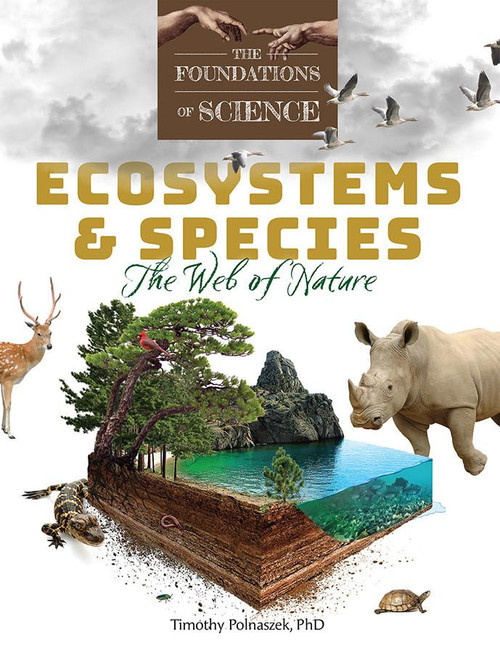“Where were you when I laid the foundation of the earth?”
—Job 38:4
The Foundations of Science introduces children to the wonders of the natural world in light of God’s providential care over creation.
Too often we hear messages that science is in conflict with faith, but Pope St. John Paul II wrote that faith and science “each can draw the other into a wider world, a world in which both can flourish.” Foundations seeks to spawn this flourishing in the hearts and minds of young readers, guiding them into a world that will delight their imaginations and inspire awe in the awesome power of God.
This eight-part series covers an extensive scope of scientific studies, from animals and plants, to the galaxies of outer space and the depths of the ocean, to cells and organisms, to the curiosities of chemistry and the marvels of our planet. Still more, it reveals the intricate order found beneath the surface of creation and chronicles many of the Church’s contributions to science throughout history.
In Ecosystems & Species: The Web of Nature, Dr. Timothy Polnaszek introduces young readers to the often overlooked but fascinating scientific branch of Ecology, showing how the myriad species found all over earth interact with one another and their environment. Children will learn how animals and plants adapt to harsh conditions in the wild and how they both battle with one another and work together. By exploring nature and examining species, populations, communities and entire ecosystems, the meticulous balance that God has written into His creation becomes apparent.
Did you know . . .
- some mantises and spiders camouflage themselves as flowers to catch insect prey?
- like animals, plants can also “sweat”?
- wood frogs live throughout Canada and Alaska because they can survive frozen solid in winter (like a frog popsicle!), and simply thaw out in warmer months?
- some tropical dry forest biomes can have as much as seventy-five inches of rain during its rainy season and as little as two inches in the dry season?
- the aptly named fat-tailed dwarf lemur stores fat in its tail to use as an energy source when it hibernates?
In addition, children will also meet heroic figures like St. Anthony of Egypt and other Desert Fathers, discover the amazing contributions made by the Augustinian friar, Gregor Johann Mendel, to modern genetics, and read some of St. Augustine’s insights on the nature of animals.
Take a journey back to when God laid the foundation of the world with this groundbreaking science curriculum!
Ecosystems & Species Audiobook
Kevin Gallagher brings his talents to the Foundations curriculum, following his immensely popular readings of TAN’s The Story of the Bible and The Story of Civilization, among countless other audio works. An exact reading of the text, Gallagher brings vitality to the text with his signature style and smooth voice. This audio work serves as a great companion to the text, bringing the natural wonders of God’s universe to life for children of all ages.
Ecosystems & Species Workbook
In this companion workbook, elementary school children will have an additional resource to help them engage with the content, and help them retain it.
Includes:
- Coloring pages
- Crossword puzzles
- Word searches
- Journaling
- Matching and Multiple Choice
- Fill in the Blank and True/False
- Short answers and Essays
In addition, each workbook contains activities and arts and crafts bearing both scientific and faith-based themes.
Ecosystems & Species Video Series
Accompanying the textbook, audiobook, and workbook, this video series seeks to challenge students to think more deeply about the world around them, setting them off on a search to discover God in the hidden corners of his creation. Hosted by Foundations editor Brian Kennelly, each video uses a short review of the chapter’s content as a platform to discuss a host of spiritual topics that reveal the truths of the Catholic Faith.
In Ecosystems & Species: The Web of Nature, such talks will explore . . .
- what the Church means by the term “economy of salvation”
- the symbolic connection between the miraculous manna in the desert and the Eucharist
- how Christ is like the keystone of our lives, while sin is like an invasive species
- the importance of passing down the traditions of our Faith
- the challenging but vitally important spiritual work of mercy known as “admonishing the sinner”
- how devotions spread throughout the lay faithful
The Foundations of Science video series seeks to reward those who are willing to explore and investigate the wonder and beauty of God’s world, so that we can discover that all things, both big and small, point back to Him.
- Publication Date:
- 03/23/2023
- Product Format:
- Set
- Height:
- 11.00
- Width:
- 8.50






